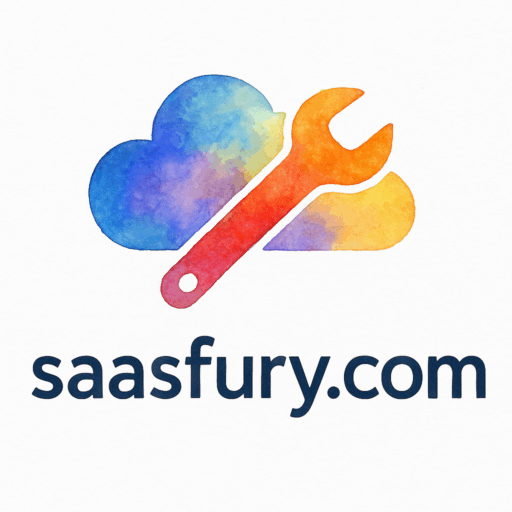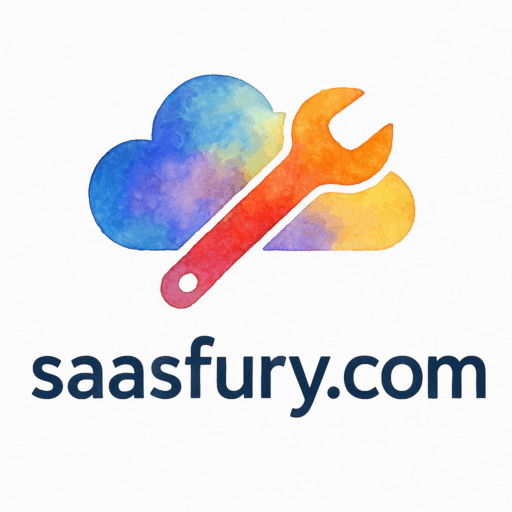Introduction: Why SaaS Tools Matter for Online Course Creators
Building and scaling an online course takes more than just knowledge—it requires the right systems. That’s where SaaS tools come in. They simplify course creation, automate repetitive tasks, and help you engage students at scale.
In fact, SaaS has become the backbone of modern online education, offering solutions that fit every stage of the learning journey—from content creation to student engagement.
In this article, I’ll share 10 SaaS tool recommendations for online course creators that will make your teaching business more efficient, scalable, and profitable.
What Are SaaS Tools and How Do They Help Educators?
SaaS Tools Explained in Simple Terms
SaaS stands for Software as a Service. Instead of downloading bulky programs, you access tools online through a subscription model. Imagine it like streaming Netflix instead of buying DVDs—only this time, you’re streaming business tools designed to help you teach.

The Benefits of SaaS for Online Course Creators
For course creators, SaaS tools mean:
- Cost efficiency – no huge upfront investment
- Flexibility – teach from anywhere in the world
- Scalability – start small and expand as your student base grows
- Constant updates – no need to worry about manual upgrades
That’s why SaaS dominates industries like creative education and small business—and online teaching is no exception.
How to Choose the Right SaaS Tools for Online Education
Scalability and Flexibility
Choose tools that can grow with you. For example, many retail SaaS tools start small but expand as businesses scale—educators can benefit from that same approach.
Ease of Use and Integration
You don’t need to be a tech wizard. Look for platforms with simple dashboards and integrations with other consulting or marketing software you already use.
Pricing and Value for Money
Free plans work at first, but as your course grows, investing in premium versions of SaaS tool recommendations often pays off in saved time and added features.
10 SaaS Tool Recommendations for Online Course Creators
1. Learning Management Systems (LMS) – Thinkific & Teachable
Why Every Course Creator Needs an LMS
An LMS acts as your course’s foundation. It’s where students register, access content, and track progress. Platforms like Thinkific and Teachable streamline the process.
Key Features to Look For
- White-label branding
- Progress tracking dashboards
- Built-in payment options
These platforms are especially powerful for educators exploring online education SaaS solutions.
2. Video Hosting & Streaming Tools – Vimeo & Wistia
Benefits of Dedicated Video Hosting
Video is king in digital learning. Instead of relying on YouTube, premium hosting services like Vimeo and Wistia provide:
- Ad-free learning environments
- Password protection for premium content
- Engagement analytics
That’s why many in creative industries and education use them to deliver professional-quality video content.
3. Course Creation & Design Tools – Canva & Visme
Making Content Visually Engaging
Nobody enjoys boring slides. Canva and Visme give you graphic design templates for course materials, infographics, and workbooks—helping your lessons stand out.
4. Email Marketing Tools – Mailchimp & ConvertKit
Building Relationships with Learners
Email isn’t dead—it’s essential. Tools like ConvertKit help online educators automate welcome emails, segment audiences, and build stronger student relationships.
This is especially useful for marketing agencies and solo creators running multiple campaigns.
5. Payment & E-Commerce Platforms – Stripe & PayPal
Secure & Seamless Transactions
Students want hassle-free payments. Stripe and PayPal provide secure global transactions with recurring billing support.
These systems mirror retail & e-commerce tools, making them a natural fit for course creators selling premium programs.
6. Webinar & Live Teaching Tools – Zoom & Demio
Enhancing Real-Time Learning
Sometimes, learners crave interaction. Zoom and Demio allow you to host:
- Live Q&A sessions
- Group workshops
- Coaching calls
These tools, often used in hospitality training and healthcare coaching, help educators deliver engaging, live learning experiences.
7. Project & Task Management Tools – Trello & Asana
Staying Organized as a Course Creator
Creating and managing an online course is a project in itself. Trello and Asana help you organize tasks, collaborate with teams, and manage deadlines—similar to how professional services firms handle projects.
8. Customer Support Tools – Zendesk & Freshdesk
Keeping Students Happy with Support
A great course isn’t just about content—it’s also about support. With Zendesk and Freshdesk, you can manage FAQs, automate responses, and provide ticket-based support.
This mirrors the tools used in hospitality SaaS for guest satisfaction, applied now to online learning.
9. Analytics & Tracking Tools – Google Analytics & Hotjar
Measuring Course Performance
Want to know where students drop off? Tools like Google Analytics and Hotjar provide data on course performance and student engagement—helping you refine lessons just like retail analytics optimize e-commerce stores.
10. Scheduling & Booking Tools – Calendly & Acuity
Simplifying Student Bookings
If you offer coaching or mentorship, tools like Calendly make it simple for students to book time slots that sync with your calendar.
Similar scheduling systems are widely used in healthcare SaaS tools for patient appointments—making them equally effective for educators.
Additional SaaS Tools Worth Exploring
- Slack for building student communities (used by language coaches)
- Notion for content planning and productivity
- Kajabi as an all-in-one course + marketing solution
Common Mistakes Online Course Creators Make with SaaS Tools
- Overloading with too many apps at once
- Ignoring omnichannel integrations
- Picking tools solely on price rather than long-term fit
Future of SaaS Tools in Online Education
With AI advancing, expect features like automated grading, personalized learning pathways, and chatbots similar to those used in medical SaaS. These innovations will transform how educators manage and scale their courses.
Conclusion: Elevate Your Online Courses with SaaS Tools
At the end of the day, SaaS tools aren’t just conveniences—they’re growth multipliers. From LMS platforms to analytics and scheduling apps, these tools let educators focus less on admin and more on teaching.
By embracing the right SaaS solutions, you can run your online course like a thriving digital business—scalable, efficient, and student-focused.
FAQs
1. What’s the best SaaS tool for beginners in online education?
Start with an LMS like Thinkific or Teachable to get your first course live.
2. Can SaaS tools replace traditional classroom learning?
Not entirely—but they enhance online learning by adding flexibility, automation, and scalability.
3. How do SaaS tools integrate with each other?
Most connect easily using platforms like Zapier or through native integrations.
4. Do I need separate tools for design and marketing?
Not necessarily. Some platforms, like e-commerce SaaS suites, combine multiple functions.
5. Are SaaS tools affordable for small course creators?
Yes, many offer free plans or low-cost starter packages tailored for small business owners.
6. How do SaaS tools improve student experience?
They make courses smoother to access, payments easier, and learning more engaging.
7. What’s the future of SaaS in education?
Expect more AI-driven personalization, similar to innovations in patient records SaaS and corporate training.


